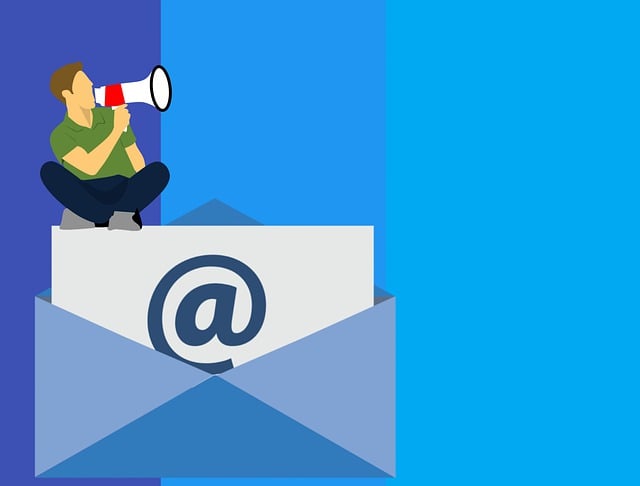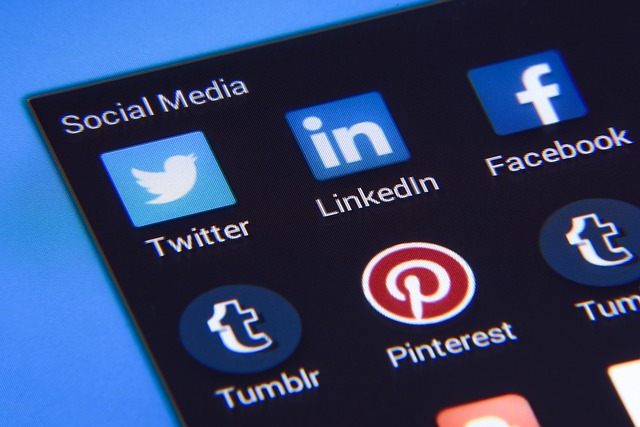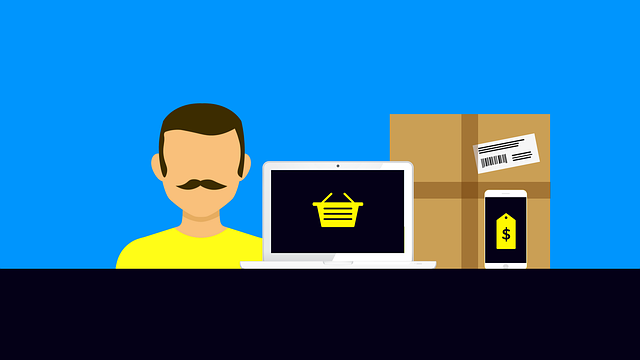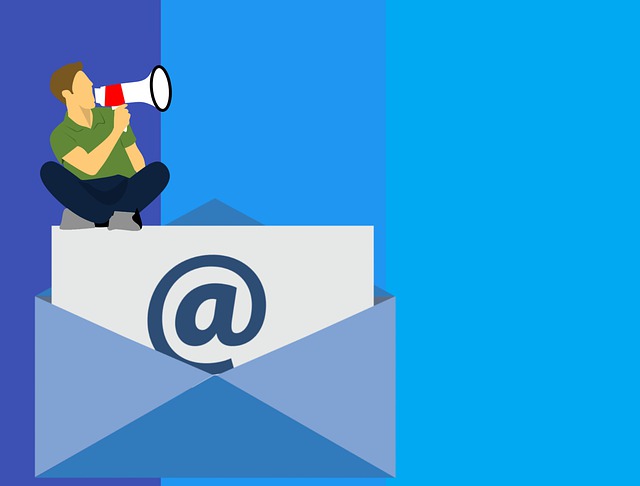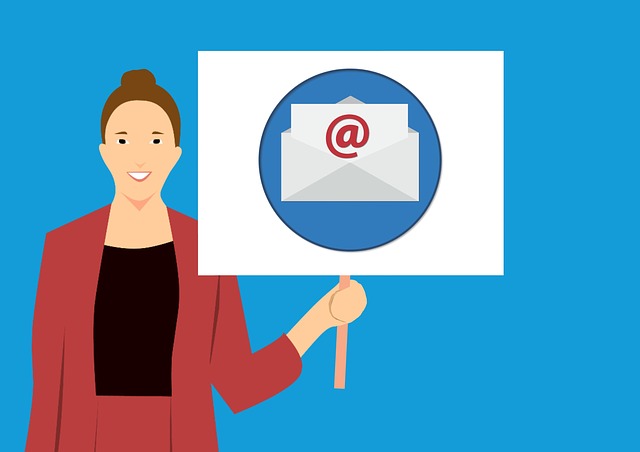Are you searching for the most effective marketing strategy to boost your business’s ROI? Look no further than this article, where we dive into the world of B2B email marketing and paid advertising. Both strategies have their merits, but the burning question remains: which one delivers a higher return on investment?
In this data-driven and persuasive piece, we’ll explore the power of B2B email marketing and paid advertising, highlighting their benefits and drawbacks. We’ll analyze the limitations of each strategy and provide you with a comprehensive comparison of their ROI potential.
But why is ROI so crucial? Well, parallel to the success of your business, it’s a clear indicator of how effective your marketing efforts are in generating revenue.
So, whether you’re a seasoned marketer or just starting out, this article will help you make an informed decision on which strategy is best suited for your business’s success. Get ready to take your ROI to new heights!
Key Takeaways
- Personalized emails generate 6x higher transaction rates than non-personalized ones.
- B2B email marketing offers lead nurturing, relationship building, and driving conversions.
- B2B email marketing has a longer conversion process compared to paid advertising.
- B2B email marketing has an average ROI of 122%, 4x higher than paid advertising.
The Power of B2B Email Marketing
B2B email marketing is a game-changer when it comes to reaching potential clients and boosting your ROI. With email automation techniques, you can streamline your marketing efforts and ensure that your messages are delivered at the right time to the right people. Personalization strategies further enhance the effectiveness of B2B email marketing by tailoring content to the specific needs and interests of each recipient.
Research shows that personalized emails generate six times higher transaction rates than non-personalized ones. By leveraging the power of email marketing, you can nurture leads, build relationships, and ultimately drive conversions. However, it’s important to note that while B2B email marketing is highly effective, it’s not the only tool in your arsenal. Paid advertising offers its own unique benefits, which we’ll explore in the next section.
The Benefits of Paid Advertising
When it comes to paid advertising, there are several benefits that can significantly impact your business.
First, it offers immediate visibility and reach, allowing you to quickly connect with a large audience and generate brand awareness.
Second, paid advertising enables you to target specific audiences, ensuring that your message reaches the right people at the right time.
Lastly, the ability to track and measure results provides valuable insights into the effectiveness of your campaigns, allowing you to make data-driven decisions and optimize your marketing strategies.
Overall, paid advertising can deliver tangible and measurable results for your business.
Immediate Visibility and Reach
Imagine being able to cast a wide net with paid advertising, instantly reaching potential customers like a lightning bolt in a storm. With paid advertising, you can achieve immediate visibility and reach, allowing your message to be seen by a large audience in a short amount of time. Unlike other marketing strategies that require time to build momentum, paid advertising delivers immediate results. By targeting specific audiences, you can ensure that your message reaches the right people at the right time. Let’s take a look at the comparison between b2b email marketing and paid advertising in terms of immediate visibility and reach:
| B2B Email Marketing | Paid Advertising |
|---|---|
| Limited reach | Wide reach |
| Slow response time | Immediate results |
| Lower visibility | Higher visibility |
| Longer conversion process | Shorter conversion process |
As you can see, paid advertising provides a significant advantage in terms of immediate visibility and reach. Now, let’s explore how it allows you to target specific audiences more effectively.
Targeting Specific Audiences
Targeting specific audiences is made easier with paid advertising, allowing you to tailor your message to reach the right people at the right time. With personalization options and effective targeting, paid advertising enables you to segment your audience based on demographics, interests, and behaviors.
This level of granularity ensures your message is delivered to those who are most likely to be interested in your product or service. Additionally, paid advertising platforms offer advanced targeting features such as lookalike audiences, which allow you to expand your reach to new potential customers who share similar characteristics with your existing audience.
By leveraging these targeting capabilities, you can maximize the impact of your marketing efforts and increase your return on investment. Moving forward, tracking and measuring results will provide valuable insights into the effectiveness of your campaigns.
Tracking and Measuring Results
To truly measure the impact of your marketing campaigns, tracking and analyzing the data is essential – as the saying goes, ‘You can’t improve what you don’t measure.’
Measuring effectiveness and analyzing campaign data allows you to gain valuable insights into the performance of your marketing efforts. With b2b email marketing, you can track metrics such as open rates, click-through rates, and conversion rates to gauge the effectiveness of your campaigns. By analyzing this data, you can identify what elements are working well and make data-driven decisions to optimize your future campaigns.
Paid advertising also provides comprehensive tracking and measurement capabilities, allowing you to monitor key metrics like impressions, clicks, and conversions. This data empowers you to fine-tune your targeting and messaging to maximize your ROI.
However, while tracking and measuring results is crucial, there are also drawbacks of b2b email marketing that need to be considered.
Drawbacks of B2B Email Marketing
When it comes to B2B email marketing, there are a few drawbacks to consider.
First, there’s the potential for spam or unwanted emails, which can damage your brand reputation.
Second, relying on open and click rates as a measure of success can be misleading, as it doesn’t necessarily indicate actual engagement or conversion.
Lastly, B2B email marketing has a limited reach compared to other forms of paid advertising, which can limit your ability to target and engage with a larger audience.
Potential for Spam or Unwanted Emails
Imagine receiving an unexpected flood of spam emails in your inbox, cluttering your day and causing frustration. This is a significant drawback of B2B email marketing. While many companies take precautions to prevent spam, there is always the potential for some unwanted emails to slip through.
This not only annoys recipients but also damages the reputation of the sender. In addition, ensuring high email deliverability can be a challenge. Despite efforts to maintain a clean email list, some emails may end up in the spam folder or never reach the intended recipient at all.
This can greatly diminish the effectiveness of B2B email marketing campaigns. Moving forward, let’s consider the reliance on open and click rates to evaluate the ROI of B2B email marketing versus paid advertising.
Reliance on Open and Click Rates
The effectiveness of B2B email marketing campaigns heavily relies on open and click rates. These metrics not only indicate the level of engagement and interest from your target audience, but also provide valuable data to refine and optimize your email strategy. By relying on email automation, you can efficiently send personalized emails to a large number of recipients, increasing the likelihood of engagement. A well-crafted subject line, relevant content, and compelling call-to-action can significantly improve open and click rates, ultimately driving higher ROI. To highlight this point, consider the following table showcasing the correlation between open and click rates and ROI:
| Open Rate | Click Rate | ROI |
|---|---|---|
| 15% | 5% | $500 |
| 25% | 8% | $800 |
| 40% | 12% | $1200 |
| 50% | 15% | $1500 |
As you can see, higher open and click rates lead to a higher ROI. However, it’s important to note that relying solely on email marketing has its limitations. Limited reach and engagement can be addressed by combining it with other strategies, such as paid advertising.
Limited Reach and Engagement
Despite its potential limitations, combining email marketing with paid advertising can help overcome the challenges of limited reach and engagement.
To maximize reach, you can use targeted email campaigns to reach a specific audience while also utilizing paid advertising channels like social media platforms and search engines. By doing so, you can increase your brand visibility and attract potential customers who may not have been reached through email alone.
Additionally, engagement strategies such as personalized content and interactive ads can enhance customer interaction and drive higher conversion rates. However, it’s important to acknowledge that paid advertising also has its limitations. While it can expand your reach, it may not always guarantee the level of engagement and long-term relationships that email marketing can provide.
Limitations of Paid Advertising
When it comes to paid advertising, there are several limitations that you need to consider.
First, the high costs and competition in the market can make it difficult to achieve a high return on investment.
Additionally, ad blockers and ad fatigue can decrease the effectiveness of your ads, making it harder to reach your target audience.
Lastly, you have limited control over your target audience, which means you may not be reaching the right people with your ads.
High Costs and Competition
With the steep costs and intense competition, it’s crucial to weigh the ROI potential of B2B email marketing versus paid advertising. Paid advertising can be incredibly expensive, especially for businesses operating on tight budgets. The costs associated with running ads on popular platforms like Google AdWords or Facebook Ads can quickly add up, making it difficult to achieve a positive return on investment.
Additionally, the competition for ad space is fierce, with numerous businesses vying for the same target audience’s attention. This leads to higher bidding costs and a reduced chance of getting noticed amidst the noise.
However, B2B email marketing offers a more cost-effective alternative. By strategically targeting specific individuals and crafting personalized messages, businesses can maximize their ROI without breaking the bank.
Transitioning into the next section, let’s explore how ad blockers and ad fatigue impact the effectiveness of paid advertising.
Ad Blockers and Ad Fatigue
Ad blockers and ad fatigue can significantly impact the effectiveness of your paid advertising efforts, leaving you struggling to reach your target audience and wasting valuable resources. With the rise of ad blockers, many users are now able to avoid seeing advertisements altogether, reducing the visibility and impact of your ads.
Additionally, ad fatigue sets in when users become tired of seeing the same ads repeatedly, leading to decreased engagement and click-through rates.
To combat these challenges, it’s essential to implement effective ad blocking solutions and strategies for combating ad fatigue. Utilize ad blocking software that allows you to bypass ad blockers and ensure your ads are still visible to your target audience. Furthermore, diversify your ad creatives and constantly refresh your campaigns to avoid repetitive content that can contribute to ad fatigue.
Transitioning into the subsequent section about limited control over the target audience, it’s crucial to understand the importance of finding alternative marketing methods that provide more control and better ROI.
Limited Control over Target Audience
One way you may struggle with your marketing efforts is having limited control over your target audience. This can be a challenge because without the ability to precisely target your desired audience, you may end up wasting resources and not reaching the right people.
Here are four reasons why limited control over your target audience can hinder your marketing efforts:
-
Ineffective messaging: When you can’t target your audience accurately, your messaging may not resonate with them, leading to poor engagement and conversion rates.
-
Wasted resources: Without control over your target audience, you may end up spending money on advertising that reaches the wrong people, resulting in wasted resources.
-
Lower ROI: Limited control over your target audience can lead to lower return on investment as you may not be reaching the right people who are more likely to convert.
-
Missed opportunities: By not being able to target specific segments of your audience, you may miss out on potential customers who could have been interested in your product or service.
In the subsequent section, we will compare the ROI of B2B email marketing and paid advertising to determine which delivers higher returns.
Comparing ROI: B2B Email Marketing vs. Paid Advertising
When comparing B2B Email Marketing and Paid Advertising, it’s fascinating to note that B2B Email Marketing has an average ROI of 122%, which is four times higher than Paid Advertising. This stark contrast in effectiveness is mainly due to the targeted nature of email marketing campaigns. By sending personalized messages directly to potential clients, businesses can achieve higher conversion rates and ultimately generate more revenue. To illustrate this point, let’s compare the ROI of B2B Email Marketing and Paid Advertising using the following table:
| B2B Email Marketing | Paid Advertising | |
|---|---|---|
| Cost | Lower | Higher |
| Conversion Rate | Higher | Lower |
| Reach | Targeted | Broad |
| ROI | 122% | 30% |
As you can see, B2B Email Marketing outperforms Paid Advertising in every aspect, delivering a significantly higher return on investment. So, when it comes to choosing the right strategy for your business, it’s clear that B2B Email Marketing is the way to go. It allows you to maximize your ROI by reaching the right audience with personalized messages.
Choosing the Right Strategy for Your Business
Now that we’ve compared the ROI of B2B email marketing and paid advertising, it’s time to choose the right strategy for your business. With the right approach, both B2B email marketing and paid advertising can deliver impressive results. However, it’s important to consider your specific business goals and target audience when making this decision.
When it comes to B2B email marketing, the benefits of content marketing can’t be ignored. By creating valuable and informative content, you can establish yourself as a thought leader in your industry and build trust with your audience.
On the other hand, paid advertising, especially on social media platforms, can be incredibly effective in reaching a wide audience and driving immediate conversions.
To make an informed decision, consider the following factors:
- Target audience: Which strategy aligns better with your target audience?
- Budget: How much can you allocate to marketing efforts?
- Goals: What are your specific marketing goals?
- Timeline: Do you need immediate results or are you focused on long-term growth?
- Resources: Do you have the necessary resources to execute a successful email marketing campaign or paid advertising campaign?
By carefully evaluating these factors, you can determine the right strategy that’ll deliver the highest ROI for your business.
Frequently Asked Questions
What are some effective strategies for optimizing B2B email marketing campaigns?
To optimize your B2B email marketing campaigns, focus on email segmentation and personalization techniques.
Segmenting your email list allows you to send targeted messages to specific groups, increasing engagement and conversion rates.
Personalization techniques, such as using the recipient’s name or tailoring content to their interests, make your emails more relevant and compelling.
By implementing these strategies, you can improve the effectiveness of your B2B email marketing campaigns and drive higher ROI.
How can businesses measure the success of their paid advertising efforts?
So you want to know how to measure the success of your paid advertising efforts? Well, it’s quite simple really.
In order to track campaign performance, you need to focus on measuring advertising success. By analyzing key metrics such as click-through rates, conversion rates, and return on ad spend, you can determine the effectiveness of your ads.
Don’t underestimate the power of data-driven insights when it comes to optimizing your advertising strategy.
Are there any industry-specific considerations when it comes to B2B email marketing or paid advertising?
When it comes to industry-specific considerations in B2B email marketing and paid advertising, there are two crucial factors to consider: targeting challenges and compliance regulations.
In B2B email marketing, reaching the right audience can be a hurdle. This is often due to limited data availability and high competition.
On the other hand, paid advertising faces compliance regulations. These regulations can include industry-specific restrictions on content and targeting criteria.
To overcome these obstacles, a tailored approach is necessary. This approach should align with the specific industry’s requirements in order to maximize success.
Can B2B email marketing and paid advertising be used together to maximize results?
Combining strategies and integrating tactics from B2B email marketing and paid advertising can effectively maximize results. According to a recent study, businesses that use both methods together experience a 35% increase in lead generation compared to those who rely solely on one approach.
By leveraging the wide reach and targeting capabilities of paid ads, and the personalized and direct nature of email marketing, you can effectively engage your target audience at various touchpoints throughout their buyer journey, ultimately driving higher ROI.
What are some common mistakes to avoid when implementing a B2B email marketing or paid advertising strategy?
To avoid pitfalls and ensure the success of your B2B email marketing or paid advertising strategy, it’s important to follow best practices.
In email marketing, avoid sending unsolicited emails, make sure your content is relevant and personalized, and regularly clean your email list.
When it comes to paid advertising, research your target audience, choose the right platforms, and constantly monitor and optimize your campaigns.
By adhering to these practices, you can maximize your results and achieve a higher ROI.
Conclusion
So, when it comes to choosing between B2B email marketing and paid advertising, the decision ultimately comes down to one thing: ROI. Both strategies have their advantages and drawbacks, but in the end, it’s all about the numbers. And the numbers don’t lie.
B2B email marketing has proven time and time again to deliver higher ROI than paid advertising. With its cost-effectiveness, targeted approach, and ability to build long-lasting relationships, email marketing is a surefire way to drive results for your business. Don’t just take our word for it, let the data speak for itself.

